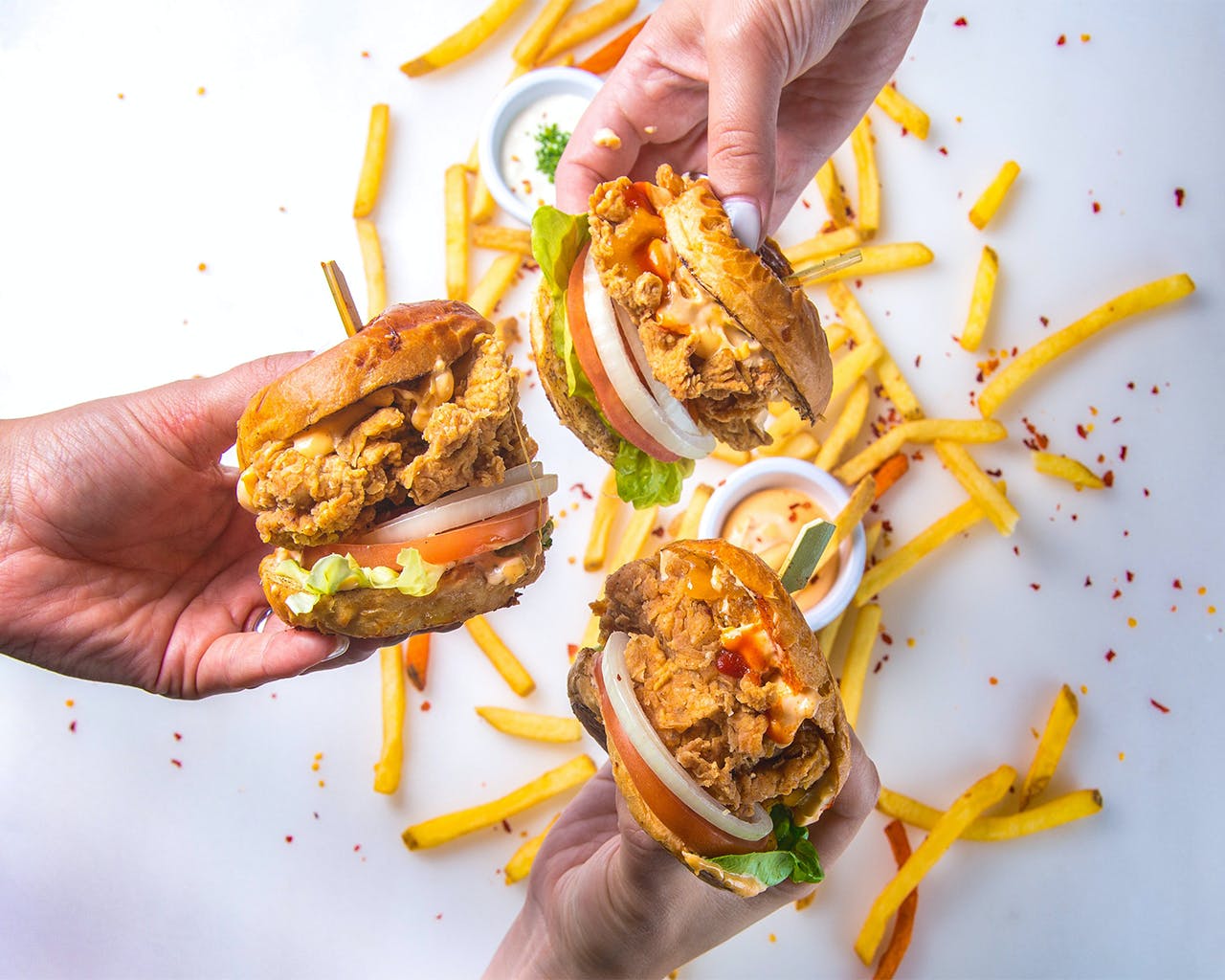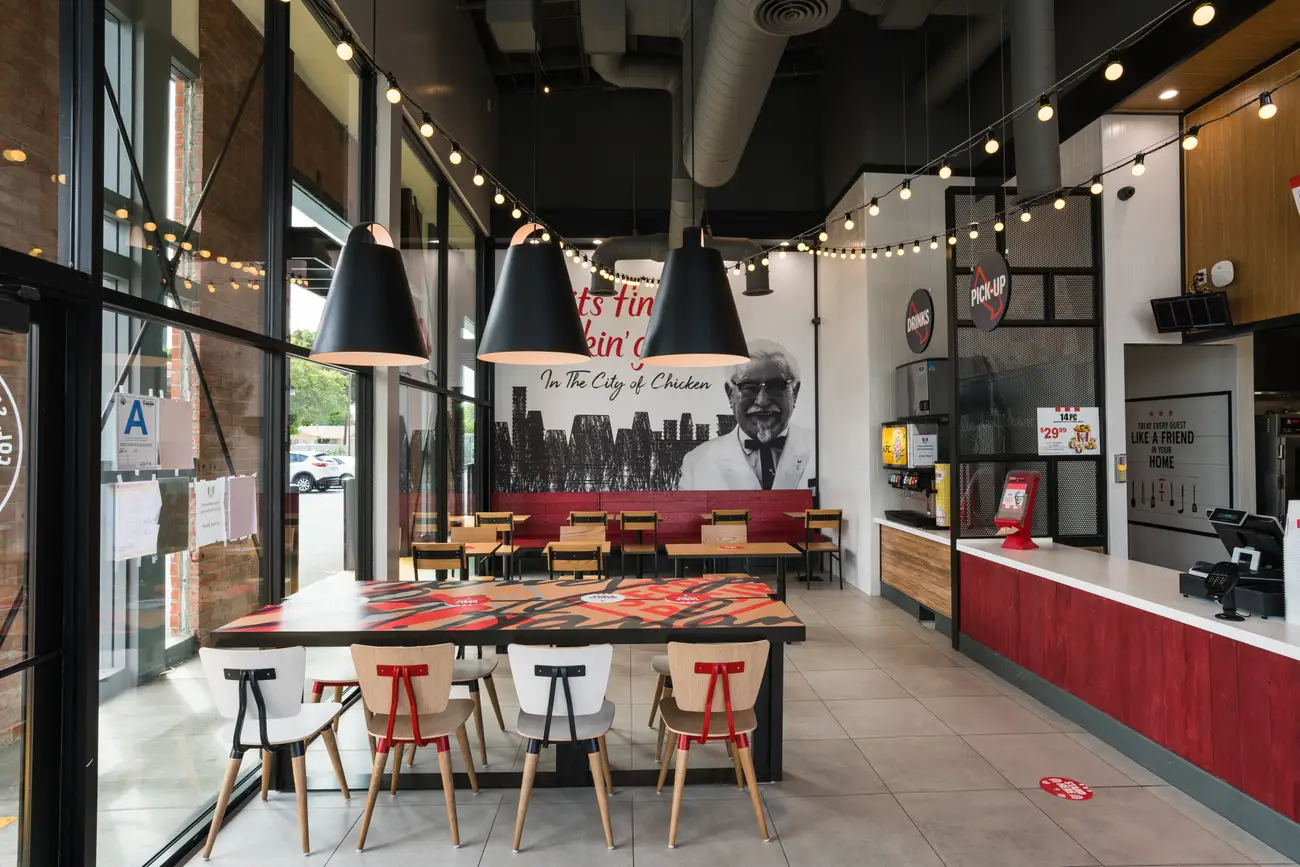Insights
A Fast-Food Face Lift
Megan Hotson
27/09/22

Like many things, the fast-food landscape has been impacted by changes brought to the consumer mindset during the pandemic.
Fast-food deliveries became incredibly popular in the context of Covid-19, allowing people to treat themselves in the absence of normality.
Consumers have now left their sofas and are displaying a preference globally for in-person ordering. Even as this sector harnesses a more omnichannel setup, there is clearly something about physical customer service, and experience they value.
Brands that have recognised this difference, and a growing consumer mindset have upscaled their interiors, and brick-and-mortar locations with the belief that the customer experience should not be lost in the rush to digital.
KFC
KFC has embarked on a global re-design of their eateries in response to evolving consumer mindsets, and habits.
The aim was to make the chicken-lovers brand feel more modern, appealing to both those customers who want to dwell that little bit longer, and those that want a meal on-the-go.

The social aspect of bringing people together over a KFC has been expressed in a new way by shining a light on their Southern heritage and cultural relevance.
The brand’s new design has not compromised on efficiency – still suiting the customer wanting to eat on-the-go. KFC has opened venues that are solely drive-thru, which will prioritise off-premise consumption.
These spaces are a lot smaller and will not have a conventional dining space. These venues will also have dual drive thru lanes, another element KFC have implemented to double-down on convenience. This restaurant model is already excelling itself in the US, where according to Insider- drive thru orders comprise approximately 70% of their total sales.
McDonald’s
The well-known golden arches are in the process of being re-designed to become a community-focused hub and hangout for a younger generation.
In the same way that KFC wants to increase customer’s dwell time – McDonald’s are re-envisioning the fast-food experience, blurring the boundary between fast and slow food eating experiences to encourage customers to stay and enjoy their food for a longer duration.

One way in which the brand hopes to do this is by placing a greater emphasis on personalising the eating experience, and making it more considered. Three major zones within the restaurants will help to do so by affording customers greater choice.
Features will include a “linger” area furnished with comfortable armchairs and sofas, as well as a bar-like area or “the grab and go zone” with Plasma TVs for consumers who would prefer to eat alone. For the larger groups there will be a “family zone” where extended groups or families can enjoy their food in a more social and colourful space with more flexible seating.
TOO Takeaways:
– Post pandemic, consumers have an increasing desire for physical interaction. Consumers are now more interested in entering spaces that foster human connection. Because of this, brands need to create more open, social spaces that facilitate a customer’s growing preference to meet and dwell.
– Looking ahead choice is a key priority for customers. Offering a variety of different areas to eat in, or ways to order will make the eating experience and overall customer journey feel more considered.
– Convenience is no longer enough to pull consumers in through the doors of these eateries. Brands must consider other elements that facilitate a more considered, or unique eating experience. Take inspiration from KFC – a brand that has used their re-design to lean into their provenance and cultural relevance which aims to immerse its customers in the brand’s heritage.


